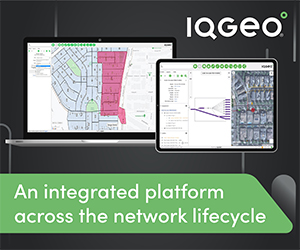In the 1970s and 1980s, the brilliant marketing minds at The Hershey Company created a memorable ad campaign for its popular candy Reese’s Peanut Butter Cups. One person walked down the street snacking on a chocolate bar, another clueless person eating peanut butter appeared walking in the opposite direction, and the two people collided.
“Hey, you got chocolate in my peanut butter,” one said. The other person replied, “Hey, you got peanut butter in my chocolate!”
Then they tried the combination. “Mmmmm…,” they smiled. “Two great tastes that taste great together.” Hershey’s nailed it with this ad campaign, introducing Americans to its most popular treat.
I remembered this ad campaign in October when I left the Wireless ISP Association conference in Las Vegas. The Multifamily Broadband Council (MBC), an organization of MDU service providers and vendors, led an all-day track at WISPAPALOOZA, a wireless conference, on the merits of the MDU market.
The MDU guys brought “peanut butter” to this conference and mixed it with the wireless folks’ “chocolate.” The combination was magical!
TWO INDUSTRIES COLLIDE
The two industries have historically thought of themselves as very different. The MDU guys hung out in apartments and condos, mostly in the big urban markets. The wireless providers (and their vendors) built their presence mostly in rural and small-town areas, with an emphasis on underserved, single-family households.
How could these two industries collide? They serve different markets, have unique customer profiles and experience very different competitive landscapes.
For years, I’ve spoken at WISPA events about the virtues of the MDU market. Each year, I asked the audience how many currently provided wireless internet services to multifamily communities. The first year, only a few hands went up. Last year, about two-thirds of the room had dipped “chocolate into peanut butter.”
Why was that?
The wireless providers, which historically utilized fixed wireless signals to reach individual units with a better product, began moving from rural, low-density areas into more suburban or urban high-density areas. One operator told me, “The technology can now support gigabit speeds, and we love the economies of scale.”
“One hop can hit 200 households,” said another long-time WISP. “We have lots of questions about how to use MDU wiring and how to support these customers, but we love the business opportunity.”
MBC has seen this coming for some time. Many new wireless ISPs were leaving the heartland and going into bigger markets with a reliable, scalable option for apartment and condo buildings. They were now competing with big cable and telcos for the same bandwidth-hungry users.
Fixed wireless can now be efficient and affordable for service providers looking to grow their businesses. Its reliability and performance improvements opened up an entirely new market for wireless operators.
But deploying wireless solutions in MDUs isn’t as easy as mixing chocolate and peanut butter. We held several sessions at WISPAPALOOZA about building MDU relationships, delivering high-quality services and understanding the expectations of property owners and residents. Representatives of the wireless companies asked great questions about the market, digital TV, bulk and retail agreements, and the sales and marketing strategies needed to succeed in this business. Their curiosity and early successes made me confident that there is tremendous growth for them in the MDU business.
Hershey’s had it right when it showed two strangers bumping into one another and discovering a new snack. These “two great tastes” are a great opportunity for both industries to get to know each other. Go dip a chocolate bar in peanut butter and try it yourself.












